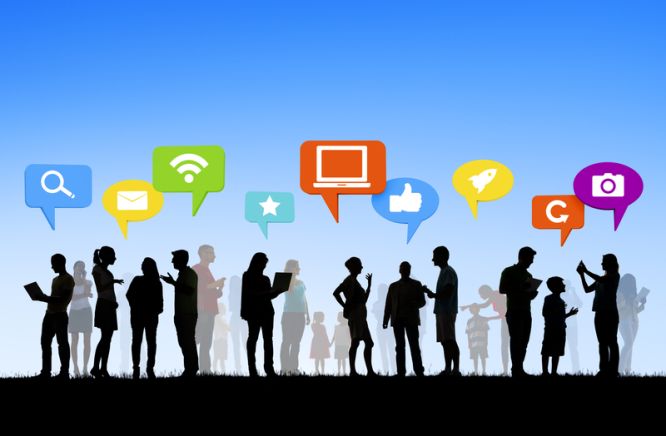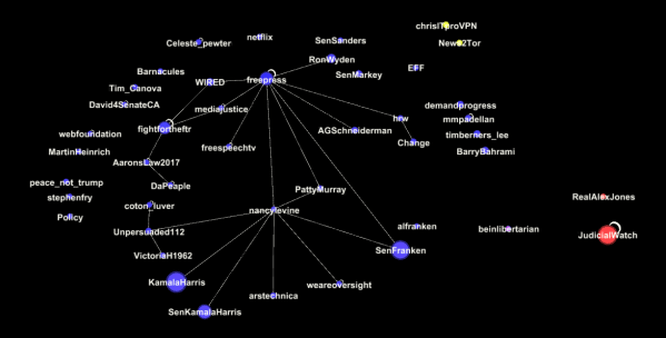Can social media help build communities?

Social media help build communities
POLITICAL POLARIZATION has been on the rise since the mid-1990s as Republican and Democratic parties drift further apart ideologically. While Americans may believe themselves to be more ideologically polarized than they actually are, there is increased animosity between Democrats and Republicans.
In a new paper, co-authors Nicol Turner Lee of Brookings and Eric Forbush, a doctoral student at the University of Pennsylvania’s Annenberg School for Communications, explore the extent to which community-building is possible on social media platforms, particularly on issues where partisanship has forced many Americans to choose sides on politically charged issues.
This paper, presented at the 2018 TPRC conference in Washington, DC, focuses on the demonstrated trends of partisanship in the net neutrality debate, a regulatory framework that prohibits blocking and unreasonable discrimination by Internet Service Providers (ISPs) and promotes greater consumer transparency. The current Federal Communications Commission (FCC) repeal of net neutrality rules led to the national Day of Action to Save Net Neutrality on July 12, 2017, one of the largest online campaigns organized around this issue.
This paper analyzes 81,316 tweets circulated on the first few weeks following the national Day of Action to test whether social media platforms like Twitter can mitigate the often heated offline tensions surrounding politically charged issues. The paper also draws upon theories in the fields of social psychology, political science, and network science to investigate and explore these trends. Our specific inquiry is about the ability of these platforms to present brokers who can help online users work through their differences and possibly toward a compromise on certain issues.
The evidence of our data analysis concluded that social media platforms, in their current state, may find it difficult to create more productive diverse communities because their algorithms reinforce the formation of existing social structures, resulting in online “echo chambers.” We further found that this will not change unless the technical architecture driving these platforms makes room for less concentrated online communities that maintain the dominance of like-minded associations.

Nodes are individual users and edges are retweets. Only users with at least 100 retweets are included. The larger the node, the more retweets an account received. Node color signifies an account’s stance toward net neutrality: blue = for, red = against, purple = neutral, and yellow = unclear.
In the case of net neutrality, highly ideological senators, including Kamala Harris and Al Franken, were influencers driving the opposition to the FCC’s repeal, alongside organizations with strong political leanings, including Free Press and Fight for the Future. Unfortunately, the absence of social media brokers, who could potentially mediate the friction between groups, resulted in even more deeply polarized communities and opinions on this issue.
Our research also found a relationship between the technical architecture of social media platforms and their contribution to these glaring divisions. In this case, certain algorithms may give dominance to sort, classify and rank information, thus contributing to the rationalization or strengthening of certain online relationships. In our opinion, technical strategies that introduce more online brokers, such as prioritizing their posts in newsfeeds or in friendship and follower suggestions, may lead to more productive debates.

John
If you want to talk about anything to so with getting more customers, give John a call 0414 955 743 – advice is totally free of charge.


